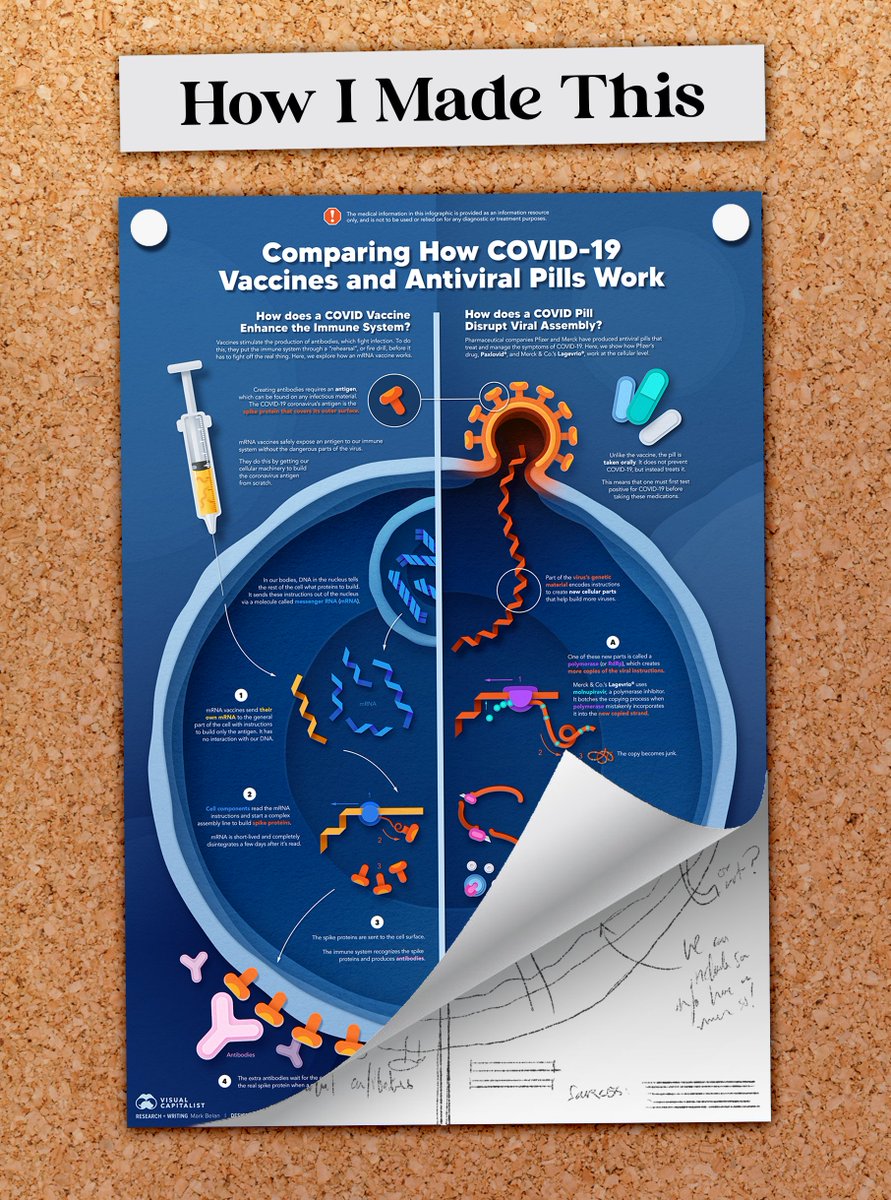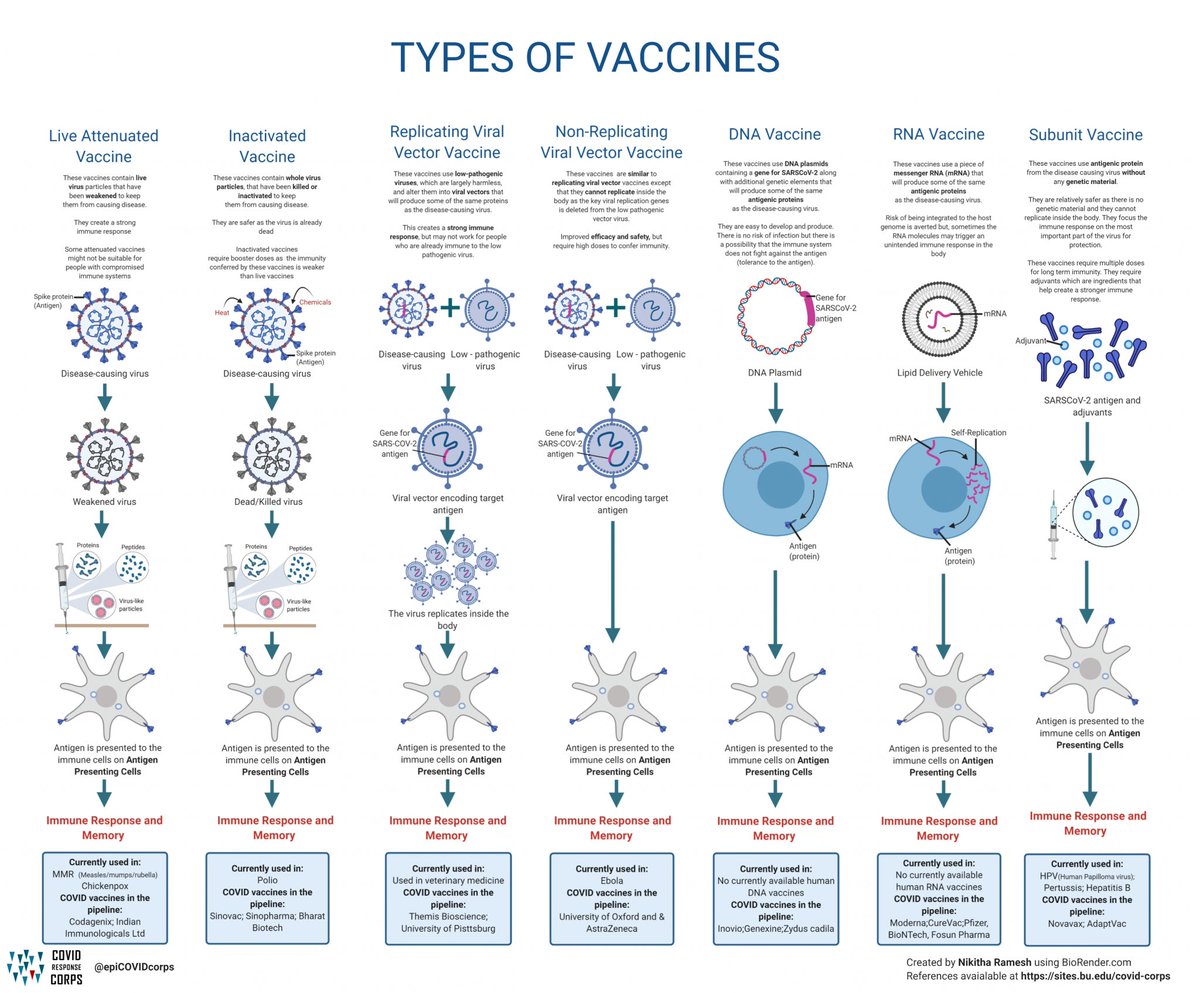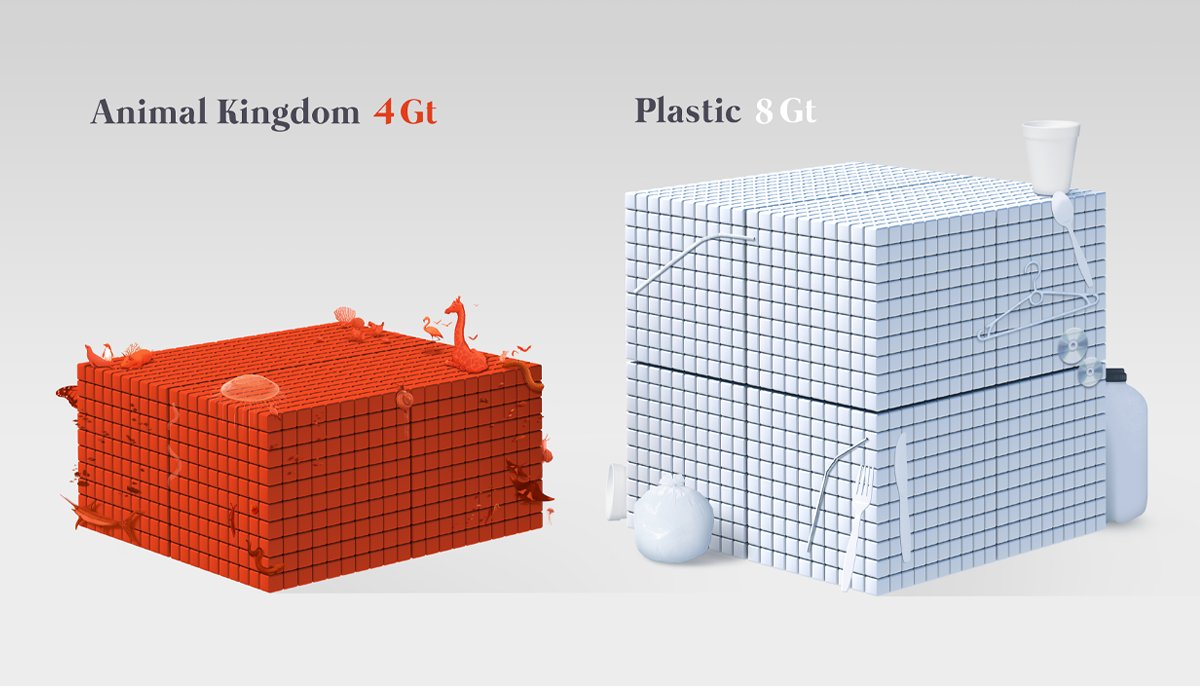
Dive-in for a peek at my #process and #designthinking on how I made my latest science infographic: "Comparing How COVID-19 Vaccines and Antiviral Pills Work" ⬇️🧵#COVID #Pfizer #Merck #DIY #infographic #vaccines #WIP #development #Covid_19 #paxlovid 

The original inspiration for this piece was the newly marketed antiviral pills by Pfizer and Merck for the treatment of COVID-19. I thought with hearing so much about vaccines this year, and with pills entering the arena, people might be curious about what each does in the body.
When I started researching, I quickly learned that there were many types of vaccines. Here's one chart I found that explains this (left; by Nikita Ramesh, made with @BioRender). My first idea (right) was to convey ALL these types of vaccines against antivirals. 



Fun Fact: I discovered that there is a yet-to-be-approved plant-based vaccine created by Canadian pharma company @medicagoinc. "Plant-based" here means that the "antigen" is a virus-like particle created by bacteria in plants medicago.com/en/our-technol…
My first idea became too demanding the more I worked on it. I was running out of "infographic real-estate", and I was being forced to cram information. I tried reshuffling so that I could introduce the necessity of an antigen, but the message was still TOO big. 



(Note: I could have just made it longer, but I knew this was going to be a bit of a "drier" piece and I didn't want to create a long, boring story, especially for a general audience. Also, I am personally not a fan of very long vertical pieces: scrollytelling gets boring, fast)
After some internal discussion with the VC team, we decided to streamline the message to compare major vaccines (currently: mRNA) and the two antiviral pills. This made the piece easier to read, w/ a cleaner comparison, and offered more room to expand on the science in each. 



Here, I was becoming more satisfied with the editorial potential: I could see a nice, big cell in my mind's eye as the hero graphic. Also, having two stories running parallel was a cool opportunity. Once this part was done, I moved on to figuring out how to "dress up" the piece.
I wanted to do something different (I always want to break the mould). I really didn't want to do "realistic" drawings of the cell; it felt too obvious and everyone else is doing it (to me, that's boring/cliche). So I thought: This topic is complicated. How can I show it simply?
This is where I began exploring the simple-vector idea, and drafted some early concepts by playing around with the Pen-tool in Photoshop (Fun Mark Fact: I really despise Illustrator, so I made all of this in Photoshop). 

I was still unsatisfied with the look. It read "flat" and not engaging enough for my tastes. This is where I had the idea to amplify the simplicity by incorporating paper-craft visuals...an idea that I thought would make science "feel" simple and approachable. 



I really liked how less "serious" and intimidating the paper-craft style looked: it felt fun and unique! I continued designing most of the assets to reflect this style choice, and I had a lot of fun doing it ☺️ Here are some close-ups I really like: 

Wrt the science: it was relatively easy to explain the mRNA vaccine process step-by-step, but describing two different pills and how they worked in one space was tricky. I had to simplify it somehow. I went through several iterations of simplification: 

^ That final iteration is so satisfying to me: turning proteases into mini x-acto knives (they cut!🔪), showing the cut-up polyprotein, and showing how to prevent it was to me a big improvement from the original illustration, which wasn't describing much.
Aside: I like my text treatment here. Instead of labelling everything, I chose color coordination to visually associate words with the illustrations. This is something I picked up from playing the Legend of Zelda games (they do something similar). 





While simplifying the antiviral story, I also changed the infographic layout: I opened it up by removing some elements. Looking at the original felt cramped/claustrophobic and stressful. It just felt right to strip back the cagey-elements and let the piece breathe a bit. 

^ I also had to make a sacrifice on the opening exposition from the first piece (which was kinda redundant/not interesting, anyway!) ✂️ Less is more!
Just a few post-production edits, color touch-ups, and some magic-making in Photoshop to make things *pop* just a tiiiiny bit more, and you've got the final poster! 💉💊✨ 

This one was a lot of fun, and despite so many changes, it took about a week to produce. As always, I like to include a process gif, so here it is!
You can read the full piece at @VisualCap here: visualcapitalist.com/visualizing-ho…
• • •
Missing some Tweet in this thread? You can try to
force a refresh







